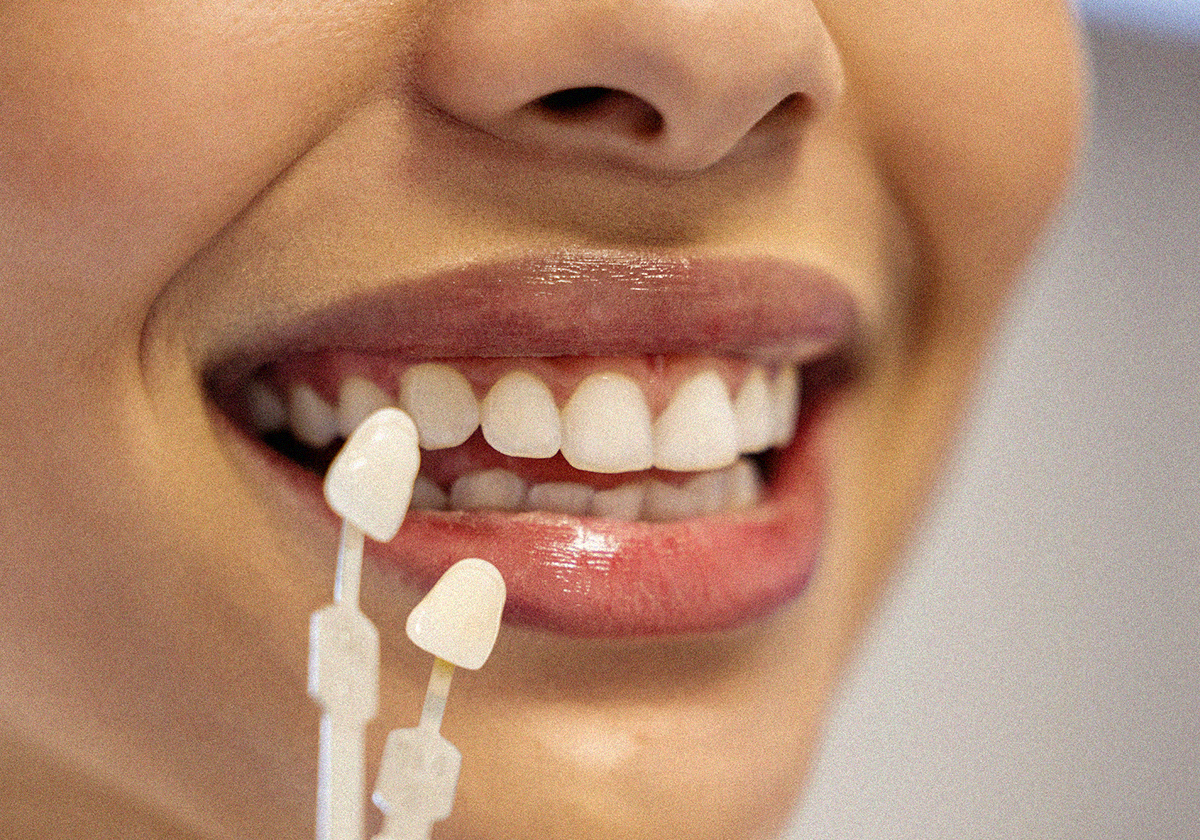SPECIALS: $189 new patients special | 159$ Whitening Kit
Unveiling the World of Dental Veneers: Transforming Smiles with a Touch of Artistry
It’s here: fresh news, dental tips, and insights

Welcome to the fascinating world of dental veneers (sounds like an intro into BBC’s Planet Earth or something, right?), a cosmetic dentistry marvel that has transformed countless smiles. In this blog post, I will delve into the various aspects of dental veneers – their types, materials, fun facts, indications, and the process of creating them. Whether you’re considering veneers for yourself or are just curious about this dental innovation, let’s explore how these thin layers of artistry work their magic.
Types of Dental Veneers
Veneers come in various types, each suited to different needs and preferences:
- Porcelain Veneers: Known for their durability and natural appearance, porcelain veneers are the gold standard in veneer materials. They resist stains better than other materials and mimic the light-reflecting properties of natural teeth. They cover up to ¾ of the tooth surface and are mainly done for upper and/or lower front teeth, but sometimes they can go as far as bicuspids. Thanks to new age dental bonding agents (read veneer glue), it is possible to retain them on even “chewing teeth”.
- Composite Resin Veneers: These veneers are made from a tooth-colored resin that is applied and sculpted directly onto the teeth. They are less expensive than porcelain and can often be fabricated in a single visit. However, they are highly sensitive and honestly much harder to fabricate. My personal opinion is that resin veneers can work for certain teeth and for a certain amount of time.
- Lumineers: A brand of ultra-thin porcelain veneers, Lumineers require minimal tooth preparation and are reversible, making them a less invasive option. Even though it sounds like the best option, unfortunately they have a very narrow indication field.
- Removable Veneers: Also known as “snap-on” veneers, these are temporary and can be taken on and off. They are an affordable and non-invasive option for cosmetic improvement (for the love of God, do not do this, we do not provide this service, and I would highly recommend caution when it comes to this! I still wanted to mention it in order to clarify what are different types and make it easier to understand next time you see a commercial regarding this topic)
Materials Used in Veneers
The choice of material plays a crucial role in the aesthetics and function of veneers:
- Porcelain is prized for its strength and natural look- pretty and strong
- Composite resin offers a balance between aesthetics and affordability
Veneer’s history- of course it’s Hollywood!!!!!
Dental veneers, as we know them today, have an interesting history that dates back to the early 20th century. They were first developed in 1928 by a California dentist, Dr. Charles Pincus.
Dr. Pincus conceived the idea of veneers to enhance the smiles of Hollywood actors and actresses. He crafted these early veneers by adhering a thin layer of material temporarily to the front of the actors’ teeth, giving them the perfect smile for the camera.
BEFORE — Shirley Temple, age 8, went before the cameras — no veneers. She lost her baby teeth, just like any child, but was never photographed with any teeth missing.
AFTER — Dr. Pincus placed “Hollywood Veneers” on Shirley’s front teeth. They were only temporary, and had to be removed daily when eating, chewing or sleeping.
However, these early versions of veneers were quite temporary and not practical for long-term use, as the adhesion methods available at the time were not advanced enough to secure the veneer permanently to the tooth surface. It wasn’t until the 1950s and 1960s that significant advancements in bonding technologies allowed for the more durable attachment of veneers. This development was crucial in transforming veneers into the common and lasting dental solution that we see today.
Indications for Veneers
Veneers are not just about a beautiful smile; they also address several dental concerns:
- Discoloration: Perfect for teeth that can’t be whitened by bleaching.
- Chips and Cracks: They cover and protect damaged teeth.
- Misalignment: Veneers can disguise minor misalignments.
- Gaps: They can close spaces between teeth.
- Worn Teeth: Ideal for restoring the natural look of worn-down teeth.
The Protocol for Creating Veneers
Getting veneers is a blend of art and science. Here’s a typical process:
- Consultation: Discuss your goals and expectations with your dentist. They will examine your teeth and discuss the best options. Here at Denteast, we offer veneer consultation at no cost (exclusions apply, call office for more details*).
- Tooth Preparation: For porcelain veneers, a small amount of enamel is removed to make room for the veneer. Composite veneers require less or no tooth preparation. Lumineers the same. We select a shade of veneers that is right for each tooth. When selecting the shade for veneers, dentists consider several factors, including the natural color of the patient’s teeth, the desired end result, and how the veneers will look in different lighting conditions.
The goal is to achieve a result that looks natural and harmonious with the patient’s overall appearance. The Vita Classical Shade Guide, which has been a standard in dentistry for many years, includes 16 shades, categorized from lightest to darkest. Nowadays we commonly use The Vita System 3D-Master which includes 29 shades, offering an even broader spectrum of colors and intensities. This system is designed to provide a more systematic and accurate way of matching tooth colors, considering factors like hue, value, and chroma.
- Impressions: Your dentist takes an impression of your teeth or we can scan preparations with a 3D scanner. Impressions or scans are then sent to a lab where your custom veneers are made.
- Temporary Veneers: In the case of porcelain veneers, temporary veneers may be placed while waiting for the permanent ones.
- Fitting and Adjustments: Once ready, the dentist fits the veneers on your teeth, making any necessary adjustments.
- Bonding: After ensuring a perfect fit and appearance, the veneers are permanently bonded to your teeth.
- Follow-up: A follow-up visit may be scheduled to check the veneers’ placement and your gum response.
Conclusion
Dental veneers offer an incredible opportunity to enhance your smile and boost your confidence. They are a testament to how modern dentistry can blend aesthetics with function to deliver life-changing results. If you’re considering veneers, talk to your dentist to determine the best type and material for your unique smile. Remember, a beautiful smile is a powerful thing, and veneers can be your path to owning one that you’re proud of. If you have any questions or are curious about whether veneers are right for you, please don’t hesitate to reach out…
Dr Sunny and Denteast Team
Book A Virtual Consultation
Meet-and-greet Dr. Sunny and plan your personalized dental care journey!
Other Topics/ Read Next

May 28, 2025
5 minutes read
Dr Sunny
You’re never fully dressed without a smile.” – Martin Charnin But what if fine lines, jaw tension, or facial pain overshadow your smile? If you’ve been staring at the mirror lately, wondering how to smooth those worry lines or stop the constant jaw clenching,

May 28, 2025
2 minutes read
Dr Sunny
Reclaim function and aesthetics through our tailor-made, durable dental restorations. If you are dealing with damaged or missing teeth, dental crowns & bridges in Fort Lauderdale offer a reliable solution. These treatments are designed to restore the strength, function and appearance of your smile
